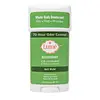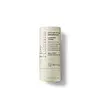What's inside
What's inside
 Key Ingredients
Key Ingredients

 Benefits
Benefits

 Concerns
Concerns

 Ingredients Side-by-side
Ingredients Side-by-side

Water
Skin ConditioningMandelic Acid
AntimicrobialMaranta Arundinacea Root Powder
Skin ConditioningTapioca Starch
Isoamyl Laurate
EmollientBehenyl Alcohol
EmollientHydrogenated Castor Oil
EmollientCaprylic/Capric Triglyceride
MaskingCaffeine
Skin ConditioningPvm/Ma Decadiene Crosspolymer
Potassium Hydroxide
BufferingGlyceryl Stearate
EmollientStearyl Alcohol
EmollientDimethicone
EmollientPanthenol
Skin ConditioningAloe Barbadensis Leaf Juice
Skin ConditioningTheobroma Cacao Seed Butter
EmollientTocopherol
AntioxidantAllantoin
Skin ConditioningStearic Acid
CleansingPalmitic Acid
EmollientCetyl Alcohol
EmollientLauryl Alcohol
EmollientMyristyl Alcohol
EmollientLecithin
EmollientPentylene Glycol
Skin ConditioningPhenylpropanol
MaskingSodium Benzoate
MaskingWater, Mandelic Acid, Maranta Arundinacea Root Powder, Tapioca Starch, Isoamyl Laurate, Behenyl Alcohol, Hydrogenated Castor Oil, Caprylic/Capric Triglyceride, Caffeine, Pvm/Ma Decadiene Crosspolymer, Potassium Hydroxide, Glyceryl Stearate, Stearyl Alcohol, Dimethicone, Panthenol, Aloe Barbadensis Leaf Juice, Theobroma Cacao Seed Butter, Tocopherol, Allantoin, Stearic Acid, Palmitic Acid, Cetyl Alcohol, Lauryl Alcohol, Myristyl Alcohol, Lecithin, Pentylene Glycol, Phenylpropanol, Sodium Benzoate
Maranta Arundinacea Root Powder
Skin ConditioningCaprylic/Capric Triglyceride
MaskingButyrospermum Parkii Butter
Skin ConditioningCetearyl Alcohol
EmollientSodium Bicarbonate
AbrasiveTapioca Starch
Cocos Nucifera Oil
MaskingCalcium Starch Octenylsuccinate
AbsorbentStearyl Stearate
EmollientParfum
MaskingEuphorbia Cerifera Wax
C15-19 Alkane
SolventZinc Ricinoleate
Glyceryl Undecylenate
EmollientHelianthus Annuus Seed Wax
Skin ConditioningPolyhydroxystearic Acid
EmulsifyingSorbitol/Sebacic Acid Copolymer Behenate
Skin ConditioningGlyceryl Caprylate
EmollientPolyglyceryl-2 Caprate
EmulsifyingWater
Skin ConditioningRosmarinus Officinalis Flower Extract
AntioxidantTocopherol
AntioxidantGlycine Soja Oil
EmollientLavandula Hybrida Oil
EmollientOrbignya Oleifera Seed Oil
EmollientPelargonium Graveolens Oil
MaskingRosmarinus Officinalis Leaf Oil
MaskingMaranta Arundinacea Root Powder, Caprylic/Capric Triglyceride, Butyrospermum Parkii Butter, Cetearyl Alcohol, Sodium Bicarbonate, Tapioca Starch, Cocos Nucifera Oil, Calcium Starch Octenylsuccinate, Stearyl Stearate, Parfum, Euphorbia Cerifera Wax, C15-19 Alkane, Zinc Ricinoleate, Glyceryl Undecylenate, Helianthus Annuus Seed Wax, Polyhydroxystearic Acid, Sorbitol/Sebacic Acid Copolymer Behenate, Glyceryl Caprylate, Polyglyceryl-2 Caprate, Water, Rosmarinus Officinalis Flower Extract, Tocopherol, Glycine Soja Oil, Lavandula Hybrida Oil, Orbignya Oleifera Seed Oil, Pelargonium Graveolens Oil, Rosmarinus Officinalis Leaf Oil
Ingredients Explained
These ingredients are found in both products.
Ingredients higher up in an ingredient list are typically present in a larger amount.
This ingredient is an emollient, solvent, and texture enhancer. It is considered a skin-softener by helping the skin prevent moisture loss.
It helps thicken a product's formula and makes it easier to spread by dissolving clumping compounds.
Caprylic Triglyceride is made by combining glycerin with coconut oil, forming a clear liquid.
While there is an assumption Caprylic Triglyceride can clog pores due to it being derived from coconut oil, there is no research supporting this.
Learn more about Caprylic/Capric TriglycerideWe don't have a description for Maranta Arundinacea Root Powder yet.
Tapioca starch is a thickening agent and is made from the cassava root, also known as yucca.
According to a manufacturer, it is an excellent talc replacement.
It is gluten-free.
Learn more about Tapioca StarchTocopherol (also known as Vitamin E) is a common antioxidant used to help protect the skin from free-radicals and strengthen the skin barrier. It's also fat soluble - this means our skin is great at absorbing it.
Vitamin E also helps keep your natural skin lipids healthy. Your lipid skin barrier naturally consists of lipids, ceramides, and fatty acids. Vitamin E offers extra protection for your skin’s lipid barrier, keeping your skin healthy and nourished.
Another benefit is a bit of UV protection. Vitamin E helps reduce the damage caused by UVB rays. (It should not replace your sunscreen). Combining it with Vitamin C can decrease sunburned cells and hyperpigmentation after UV exposure.
You might have noticed Vitamin E + C often paired together. This is because it is great at stabilizing Vitamin C. Using the two together helps increase the effectiveness of both ingredients.
There are often claims that Vitamin E can reduce/prevent scarring, but these claims haven't been confirmed by scientific research.
Learn more about TocopherolWater. It's the most common cosmetic ingredient of all. You'll usually see it at the top of ingredient lists, meaning that it makes up the largest part of the product.
So why is it so popular? Water most often acts as a solvent - this means that it helps dissolve other ingredients into the formulation.
You'll also recognize water as that liquid we all need to stay alive. If you see this, drink a glass of water. Stay hydrated!
Learn more about Water